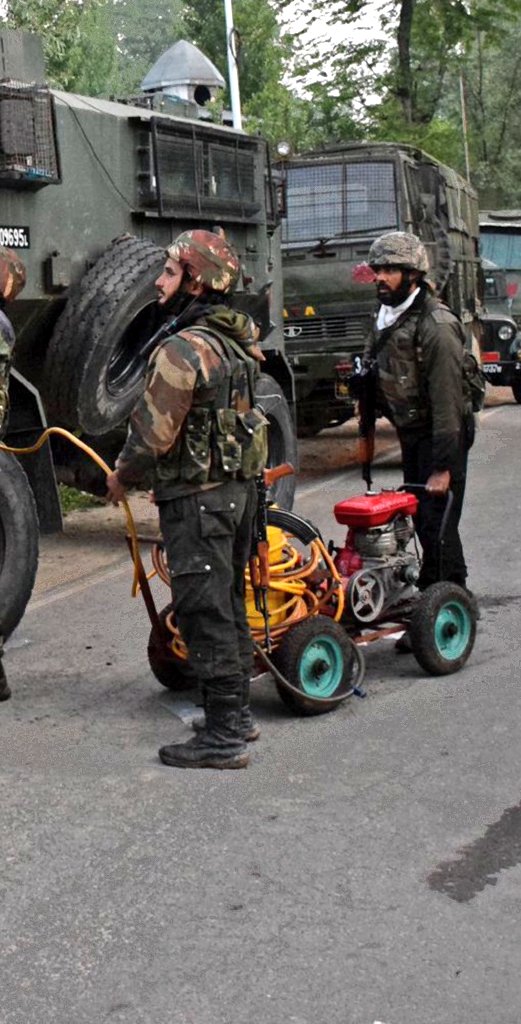SOURCE: AFI

The recent encounter in Kulgam, Jammu and Kashmir, marked a rare instance of the Indian Army deploying a flamethrower. This unconventional tactic, reportedly used to neutralize trained terrorists, raises questions about its advantages and limitations in counter-terror operations.
The primary rationale behind using a flamethrower in Kulgam seems to be minimizing casualties on the Indian Army’s side. Flamethrowers excel at clearing fortified positions and flushing out hostiles from confined spaces. In situations like the Kulgam encounter, where terrorists might be holed up in a building, a flamethrower can neutralize the threat at a distance, reducing the risk of close-quarter combat for soldiers.
The primary reason for using a flamethrower in this instance seems to be minimizing casualties on the Indian Army’s side. Here’s how flamethrowers might offer some advantages:
- Area Denial and Flushing Out: Flamethrowers excel at clearing fortified positions or driving out occupants from confined spaces.
- Limited Collateral Damage: Compared to explosives, flamethrowers can offer more control over the affected area, potentially reducing unintended damage to nearby structures or civilian lives.
- Psychological Impact: The psychological effect of a flamethrower can be significant, potentially causing enemy combatants to surrender or become disoriented.
Flamethrowers are generally not a preferred weapon in modern warfare due to the limitations . Their use is typically reserved for very specific situations, such as clearing fortified positions or entrenched enemies in close-quarter combat scenarios.
The Kulgam encounter highlights the complexities of counter-terrorism operations. While flamethrowers may offer some advantages in specific situations, their use needs careful consideration due to the potential for civilian casualties and environmental damage. The Indian Army likely resorted to this tactic due to the specific circumstances of the encounter, prioritizing minimizing casualties on their own side.